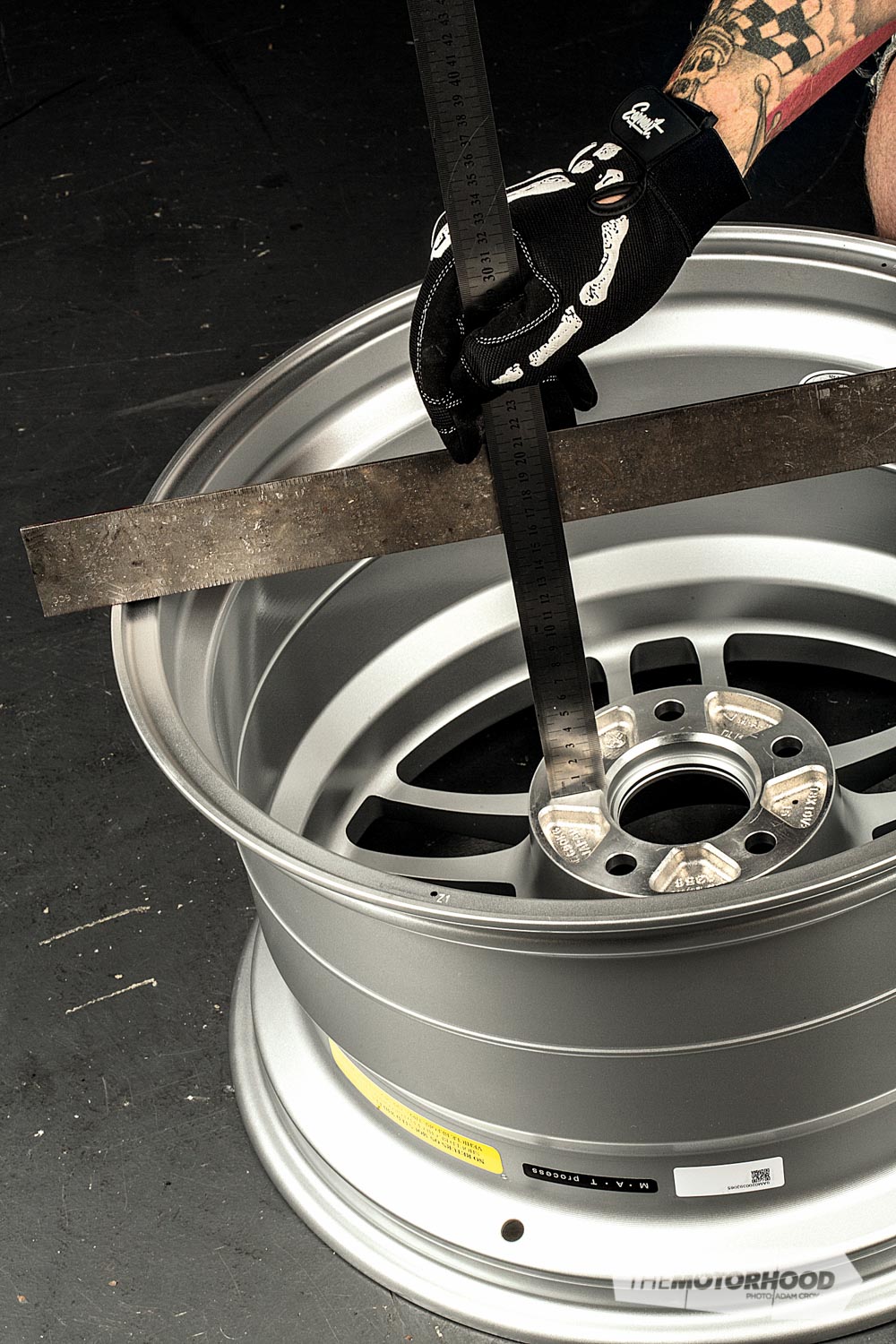Offset
There are two different methods for measuring wheel offset, the back-space method and the centre-line method, which is the most common. This takes a measurement from the wheel’s true centre line to the hub mounting face, giving you either a negative or positive measurement. If you’re lucky there will be a set of stampings on the inside of the wheels indicating the PCD (explained below) and the offset. The offset with be a number accompanied by either ET, P or just the measurement (as shown) to indicate a positive offset. Alternatively, a negative offset is shown by -ET, N or (-). These markings are common on one-piece wheels, but on two- or three-piece wheels you will likely have to measure it yourself.

Step one:
First you must determine the width of the wheel. You will need this measurement in millimetres, even though we commonly refer to wheel widths in inches. It is more accurate to do this with no tyre on, but if you have rubber on lie the wheel flat and lie a straight edge across the wheel.

Measure from the ground to the straight edge. This is not the true measurement of the width, for this you will have to subtract one inch from your measurement, as the true wheel width is from inside lip to inside lip. If the tyre is removed, measure between the inside faces of the outside lips. The Enkei we used measured 267mm.
Step two:
Take the width measurement (so in our case it was 267mm) and divide this by two, which will give you the true centre line (in our case it was 133.5mm).

Step three:
Now using a straight edge on the back side of the wheel measure to the hub mounting face (in our case this measured 118.5mm). Take this measurement and subtract your centre-line measurement, which gave us 15. This means the wheel was a 18×10.5-inch with a (+15) offset. If the back-space measurement was less than the centre-line measurement the offset would be a negative number, common on wheels with big dish.

What is PCD?
The PCD (pitch circle diameter) of a wheel refers to the diameter of an imaginary circle drawn through the centre of the stud holes on the mounting face of the wheel. If the wheel has an even number of bolt holes, in other words it’s a four-, six- or eight-stud, you simply measure between two opposing holes. If the wheel is a five-stud there are two ways to calculate this. Either you simply draw an imaginary circle through the centres of the five bolt-holes, and measure the diameter, or you measure the distance between two neighbouring holes and multiply by 1.701.
As an example, 5×114.3 would indicate the wheel is a five-stud with a PCD of 114.3mm.





